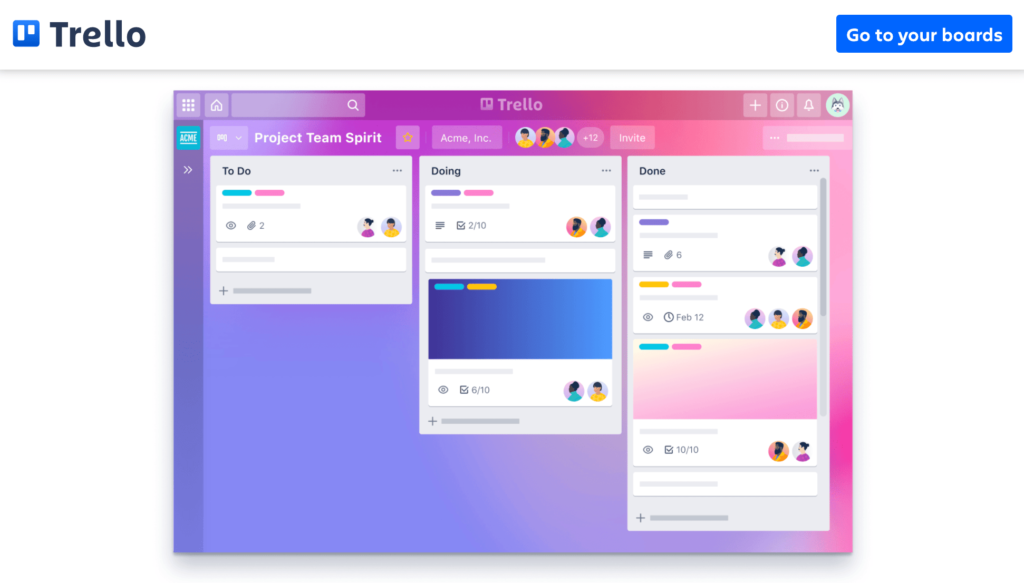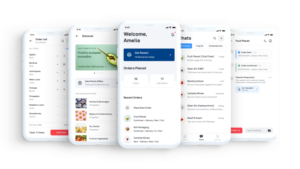Choosing the right project management methodology is crucial to the success of any organization. Whether you’re managing a single team of a few individuals or overseeing an extensive portfolio of projects across an entire department, narrowing down the methodology is the first step.
With so many variables to consider for each project, the methodology represents the core foundation of how teams will approach each task and process throughout the project lifecycle.
Ultimately, implementing the right project management methodology helps managers improve efficiencies and reduce bottlenecks in the workflow.
Once deployed, project management methodologies can be repeated from project to project, creating total consistency for your team at scale.
What is a Project Management Methodology?
Simply put, project management methodologies define the infrastructure for completing projects. Each method has its own unique blueprint for how tasks and projects are executed from start to finish.
Factors like workflow, team roles, checks and balances, deadlines, expectations, and more will vary from one methodology to another.
As a project manager, it’s essential to take a big-picture approach to project management to ensure that goals are reached on-time without going over budget. The total project scope must be considered before you can deploy a project management methodology that makes sense for your team.
4 Tools to Improve Project Management Methodologies
Modern technology has made it much easier to apply different management styles to various project types. In addition to the four tools listed below, check out our complete guide of the best project management software on the market today.
#1 — Trello

Trusted by over one million teams across the globe, Trello is one of the most popular project management solutions on the market today. Big names like Google, Costco, Squarespace, and Fender all rely on Trello. One of the reasons why this tool ranks so high on my list is its versatility. It’s a viable option for teams of all sizes across every industry, and it supports multiple project management methodologies. Trello uses Kanban-style boards to manage tasks. If you’re working with beginners and teams without a ton of experience using project management software, Trello has virtually no learning curve.
Every Trello plan comes with unlimited cards and built-in automation. The automated tools are perfect for managers who want to reduce the number of tedious clicks and tasks they make daily. Instead of worrying about mundane housekeeping work, you’ll have the ability to focus on big-picture management goals. Trello has an entry-level plan that’s free forever. Upgrade to a paid plan if you want more than just a Kanban board. These come with dashboard views, timeline views, team table views, calendar views, map views, and more. I personally use Trello daily to manage projects for multiple teams, so it’s definitely a tool that I can recommend with confidence.
#2 — Wrike
Wrike is another well-known and trusted name in the project management software space. It’s used by more than 20,000 organizations like Dell, Airbnb, Siemens, and more. The software is a bit unique compared to some of the other project management tools on the market today. Wrike is built to accommodate the needs of marketers and creative teams. The tool makes it easy to manage creative briefs, incoming requests, and automating workflows. Wrike even has ready-made templates for things like proofing and approvals.
In addition to marketing, Wrike has solutions for professional services organizations and product development teams as well. It’s used for enterprise project management, agency project management, agile project management, project portfolio management, resource management, remote work, and more. But at its core, Wrike really stands out from the crowd with its marketing templates for things like content creation, event management, marketing operations, campaign management, and go-to-market planning. It comes with visual workload management tools, team collaboration features, over 400 integrations, Gantt charts, and so much more. The software is free for up to five users. Paid plans start as low as $9.80 per month. Try it for free with a 14-day trial.
#3 — Zoho Projects
Zoho is one of the most well-recognized names in the world of cloud software and SaaS applications for business. So it should come as no surprise to see Zoho Projects rank so high on our list. The software is extremely versatile and can accommodate a wide range of teams, industries, and project management methodologies. Zoho Projects allows team members and project managers alike to see the big-picture view of projects and tasks with Gantt chart views. The software has an intuitive user interface and integrates with other business apps like Google Drive, Microsoft Teams, Basecamp, Slack, Zapier, and more.
Zoho Projects is used for project teams in categories like construction, education, marketing, software development, real estate, consulting, quality assurance testing, and more. Another unique standout of Zoho Projects is its time tracking capabilities. Your entire team can track how much time they spend on particular tasks. As a manager, this gives you crucial insights required to identify potential bottlenecks in your process. It’s also a useful feature to manage client billing. For small teams of up to three users, Zoho Projects is free forever. But the free plan only supports two projects, so it’s not really a viable business option at scale. Paid plans start at just $5 per month and support unlimited projects. Try Zoho Projects for free with a 10-day trial.
#4 — Jira Software

Jira Software has the same parent company as Trello, a tool mentioned earlier on our list. Even though Jira and Trello are both offered by Atlassian, the two are very different. While Trello is a simple project management solution that’s easy for beginners and a wide range of potential use cases, Jira is a bit more complex and use-case specific. This project management tool is built specifically for software development teams using agile project management methodologies.
Developers have unique needs. Jira recognizes this and offers features within the platform to accommodate projects in the software development category. You can use it to plan sprints, create user stories, and assign tasks to your entire software team. You’ll be able to prioritize tasks and see everything within the full context of your goal. Jira supports continuous integration and deployment, and you can use it to track and manage different software releases. Jira also offers real-time visual reporting information that you can use to assess your team’s performance. If you’re managing an agile software development team, Jira should be at the top of your list. It’s free for up to ten users, and paid plans start at $7. Sign up for a free trial to try a premium Jira version at no cost for seven days.
The Basics of Project Management Methodologies
When you factor in hybrid methodologies and variations, there are dozens of different project management methodologies to choose from. But I’ve identified and explained the most popular ones below.
Waterfall Project Management
The waterfall methodology is arguably the simplest way to manage projects. This methodology follows a linear approach in which each task is completed in a pre-defined sequential order.
Task B isn’t started until Task A is complete. Once Task B is finished, you move on to Task C, and so forth.
This methodology works well for projects with clearly defined outcomes. But it’s not suitable for real-time changes and adaptability throughout the project lifecycle. It also doesn’t work well if clients and stakeholders have a heavy involvement throughout the process.
Agile Project Management
As the name implies, agile project management is much more dynamic than traditional methodologies. Instead of following a linear approach, the agile process is adaptive and built to accommodate changes throughout the process.
Agile principles support contract changes and client collaboration throughout the process. It’s designed for projects that could change at a moment’s notice. If your project starts without a clearly defined end goal, then an agile methodology will likely be the best option for you.
While popular, this methodology isn’t perfect. The lack of structure and too much collaboration can sometimes cause delays in the project. But it’s the best option if your client will be providing feedback and making recommendations in real-time throughout the process.
Scrum Project Management
The scrum project management methodology is popular amongst software development teams. This framework takes a larger project and breaks the tasks up into sprints. Usually, scrum managers will hold a quick 15-minute meeting every day so each team member can share their progress and plan for upcoming tasks.
For scrum to work at the highest level, it requires teams to work autonomously. Even though there are daily check-ins, it’s up to each person to complete the necessary tasks in a given sprint. There won’t be as much micro-management, and teams have the freedom to make certain decisions on their own.
Scrum is built for speed. The methodology is highly adaptable, which is better for projects that don’t have strict timelines. For something like mobile app development or another similar software project, change is expected throughout the process.
Kaban Project Management
This project management methodology is focused on a Kanban board, which tracks tasks within a project. By default, tasks typically fall within three default columns—to-do, in progress, and done. But most project managers expand those columns to account for other steps in the workflow.
Each time a task is completed, it moves to the next column of the Kanban board. It’s common for teams to pass responsibilities off to another person as the task moves throughout the board.
Kanban project management is easy to deploy and doesn’t require a ton of project management experience for the team. It’s ideal for simple tasks and ongoing projects without a clearly defined end date. The best part about Kanban project management is that it’s easy for managers and team members to see the progress at a visual level. So it’s easy to track progress and identify potential bottlenecks. Kanban project management is great for team collaboration as well.
Lean Project Management
The lean methodology dates back to product manufacturing teams. It’s designed to eliminate waste within a project while maximizing customer value. In a nutshell, the goal for lean projects is to improve efficiencies and get more accomplished faster while using fewer resources.
Project managers use a lean approach to identify inefficiencies in the workflow. These managers may ultimately decide to eliminate certain tasks or steps within a process.
Lean projects focus on the bare essentials required to add measurable value to a project. This methodology is perfect for scenarios where organizations must adapt to changing client needs and standards.
3 Tricks For Project Management Methodologies
As an experienced project manager who has used several different methodologies throughout my career, I’ve identified a few quick tricks and simple hacks that you can use to improve your process.
Trick #1: Assess Your Team
The methodology you choose is useless if your team isn’t capable of applying those principles. Except for a startup, most teams are already in place when a new project manager takes over and implements a management methodology.
What methodology has your team used in the past? How large is your team? Will you be working in-person or collaborating remotely?
These are the types of questions you need to ask yourself before you commit to a methodology. In some cases, your favorite methods may not be appropriate for the team in question.
Trick #2: Follow Industry Standards
Don’t try to reinvent the wheel here. There’s a reason why so many project managers within specific industries all use the same methodology.
For example, agile and scrum methodologies are commonly used for software development. That’s because they fit well within the nature of any given software project, regardless of what the final product is supposed to look like. Kanban is better suited for things like construction, marketing, and professional services projects.
If you’re stuck, do some research on what other managers within your industry are using. There’s a good chance you can apply that same methodology to your team.
Trick #3: Think About Scale
The best project managers understand the big-picture. You don’t want to deploy a different methodology for each project. That’s a quick way to confuse your team and fall behind schedule.
Instead, you need to figure out which methodology can easily be repeated across your entire portfolio of projects. This is crucial for agencies that work with a wide range of clients doing different types of projects. If your process is easily repeatable, you can deploy it at scale regardless of other factors.
That’s another reason why it’s so important to have the right project management software. All of your projects can be managed the same way, at scale, within a single source of truth.





![Read more about the article [Funding alert] Reliance, Bill Gates invest in US-based battery storage company Ambri Inc](https://blog.digitalsevaa.com/wp-content/uploads/2021/07/funding-1625115361141-300x150.png)
![Read more about the article [Funding alert] B2B ecommerce player Bizongo completes $51M funding round](https://blog.digitalsevaa.com/wp-content/uploads/2021/03/V-05-1600852077699-300x150.png)





